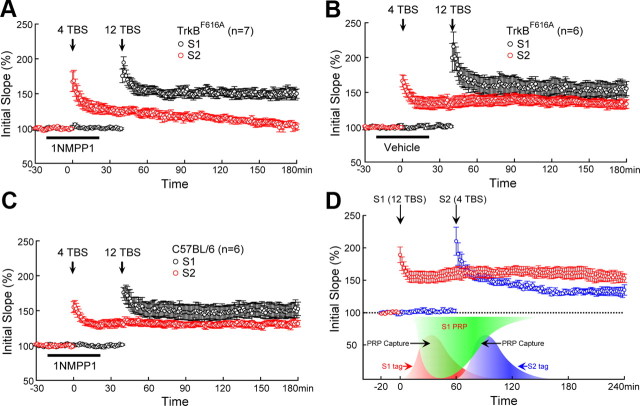Figure 6.
Further evidence for TrkB as synaptic tag for L-LTP. The “two-pathway” experiment was done exactly the same way as in Figure 5, except that 4TBS was applied to S2 40 min before (instead of 60 min after) 12TBS applied to S1. Application of 1NMPP1 or vehicle (DMSO) is indicated by the black bar. A, Treatment with 1NMPP1 (5 μm) in TrkBF616A slices blocked L-LTP in S2, without affecting L-LTP in S1. B, L-LTP was induced by 12TBS in S1 and by 4TBS in S2 in TrkBF616A slices treated with vehicle around the time of 4TBS. C, L-LTP was induced by 12TBS in S1 and by 4TBS in S2 in wild-type (C57BL/6) slices treated with 1NMPP1 around the time of 4TBS. D, Synaptic tagging model for two-pathway recording. Short-lived synaptic tag can be generated by strong (12TBS) and weak (4TBS) stimulation, while the PRPs can only be induced by strong stimulation. Overlap of the tag wave and PRP wave indicates the capture of PRPs, leading to L-LTP in that specific pathway.

